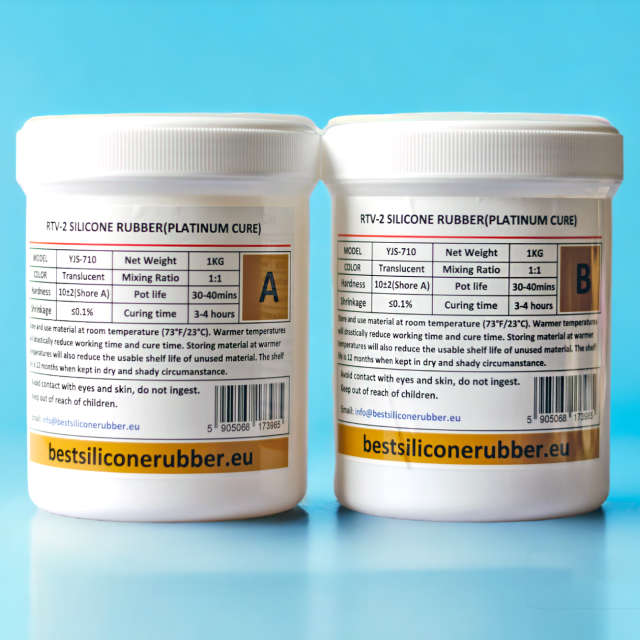Description
Cure Inhibition - Addition-cured silicone rubber may be inhibited by certain contaminants in or on the pattern to be molded, potentially causing stickiness at the pattern interface or a complete failure to cure throughout the mold. Latex, sulfur clays, specific wood surfaces, newly cast polyester, epoxy, or urethane rubber may induce inhibition. To address concerns about compatibility between the rubber and the surface, it's advisable to conduct a small-scale test. Apply a small amount of rubber to a non-critical area of the pattern. Inhibition is indicated if the rubber remains gummy or uncured after the recommended curing time has elapsed. To prevent inhibition, applying one or more coats of clear acrylic lacquer to the model surface is often effective. Ensure any sealer is fully dry before applying rubber.
Even with a sealer, YJS silicones won't cure properly against surfaces containing sulfur. If unsure whether your clay contains sulfur, perform a small compatibility test before using it for a significant project.
As each application varies, conducting a small test application to assess suitability for your specific project is recommended if there are doubts about this material's performance.
Measuring & Mixing - Before starting, pre-mix Part A and Part B separately. After dispensing the required amounts of Parts A and B into the mixing container (1A:1B by volume), thoroughly mix, ensuring you scrape the sides and bottom of the mixing container several times. The rubber should exhibit a uniform color with no streaks.
Optional... Vacuum Degassing - Though not essential, vacuum degassing helps remove any trapped air in pourable silicone rubber. After mixing Parts A and B, vacuum the material for 2-3 minutes at 29 inches of mercury, ensuring adequate space is left in the container for product expansion.
Pouring - For optimal results, pour your mixture in a single spot at the lowest point of the containment field, allowing the rubber to find its own level. A consistent flow will help minimize trapped air. When using as a mold material, the liquid rubber should rise at least 1/2” (1.3 cm) over the highest point of the model surface.
Curing - Allow YJS-715 silicone rubber to cure for 4 hours at room temperature (73°F/23°C) before demolding.
Heat Curing - Demolding time can be reduced by applying mild heat. For example, after pouring YJS-715 rubber at room temperature, place the mold in a hot box or industrial oven at 140°F (60°C). This can reduce the demolding time of a 1/2” (1.3 cm) thick section to about 10 minutes. Note: Demolding time may vary depending on mold thickness.
Mold Performance & Storage - The lifespan of the mold depends on its usage (materials cast, frequency, etc.). Casting abrasive materials can quickly deteriorate mold detail, while casting non-abrasive materials (like wax) won't affect mold detail. Before storing, clean the mold with a soap solution and ensure it's fully dry. Two-part (or more) molds should be assembled. Store molds on a level surface in a cool, dry environment.
Specification
| Characteristics of liquid silicone rubber | |
| Hardness (Shore A) | 10±2 |
| Mix Ratio | 1:1 |
| Color | translucent |
| Pot life (25 °C (77F)) | 30-40 mins |
| Curing time (25 °C (77F)) | 3-4 hours |
| Mixed viscosity (mPa.s) | 1500±300 |
| Tear-strength (kg/cm) | ≥17 |
| Tensile-strength (M.pa) | ≥3.5 |
| Elongation (%) | ≥650 |
| Shrinkage | ≤0.1% |
| Component A weight | 1 kg (≈2,2 lb) |
| Component B weight | 1 kg (≈2,2 lb) |
Reviews (0)
Tags: candle paints, candle paint, candle dye, Paint, water based, soap paint


